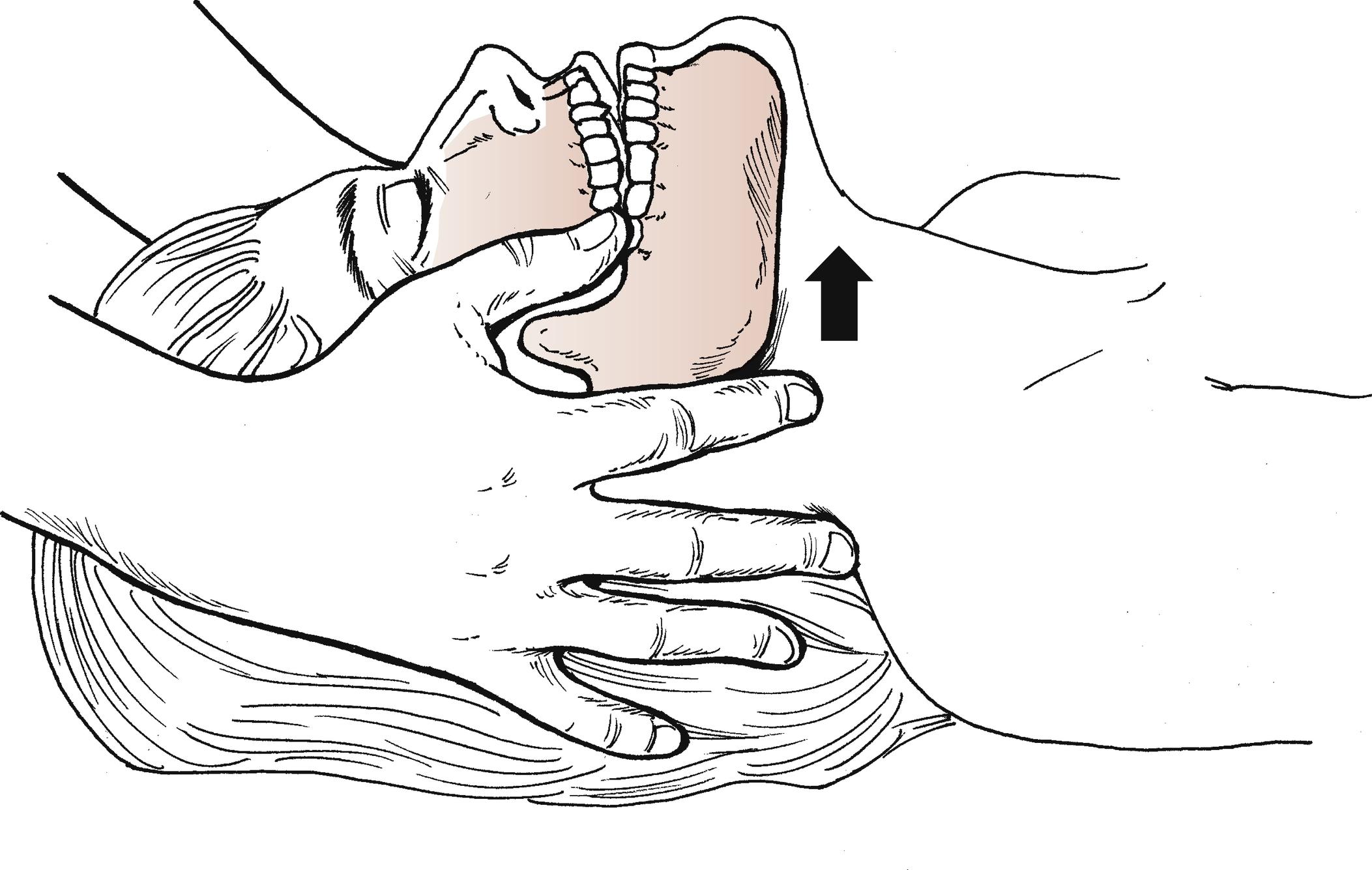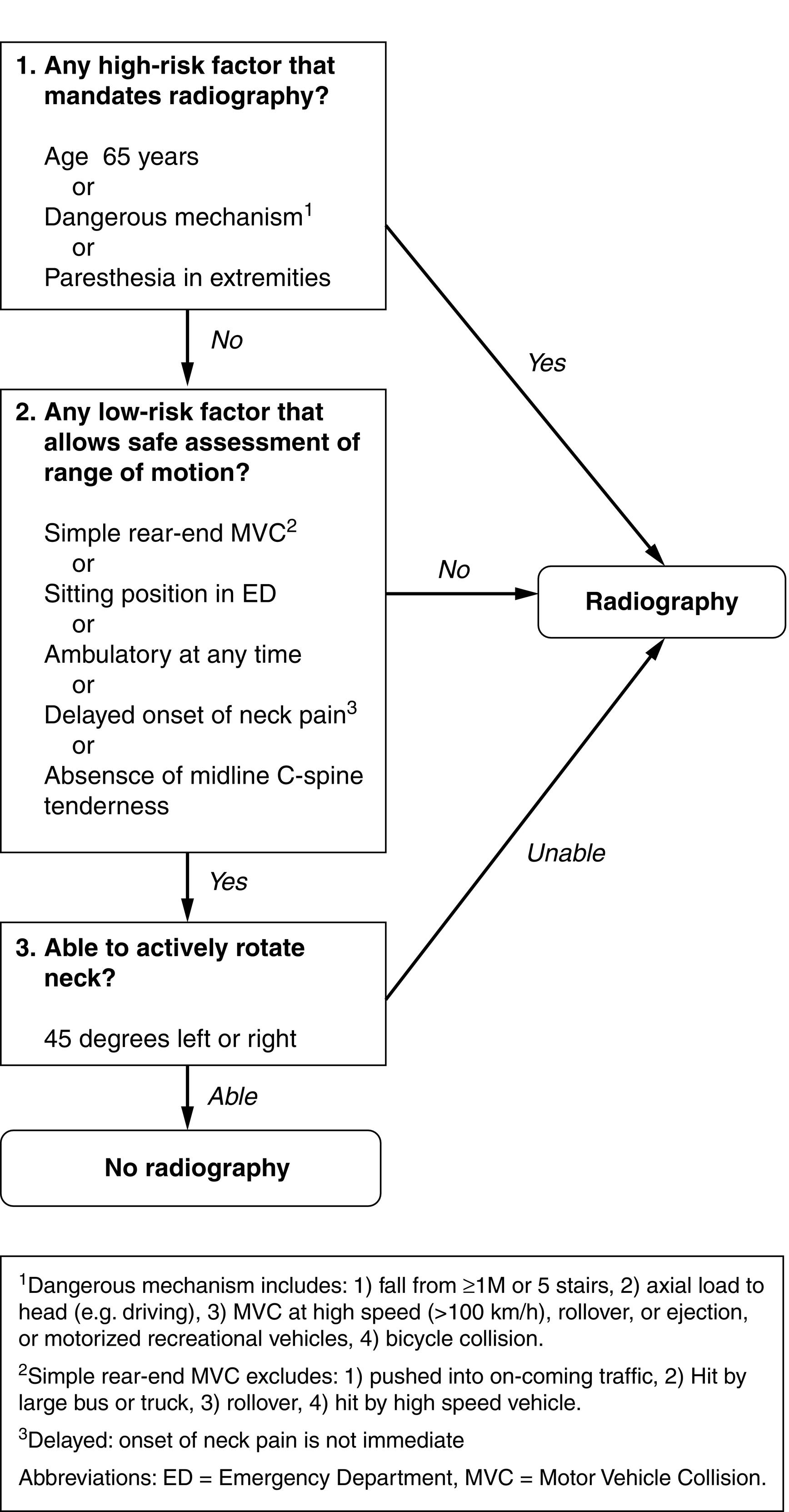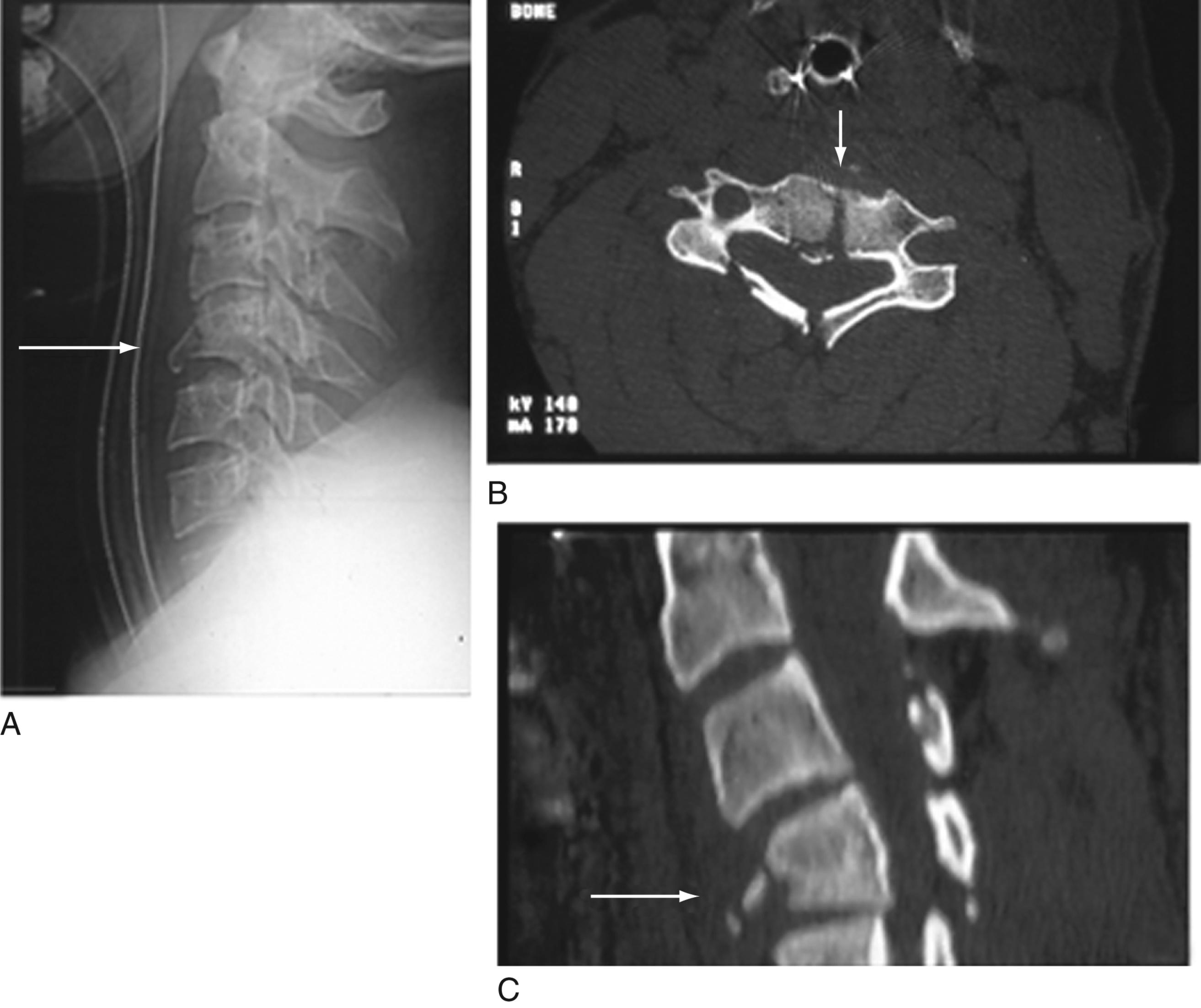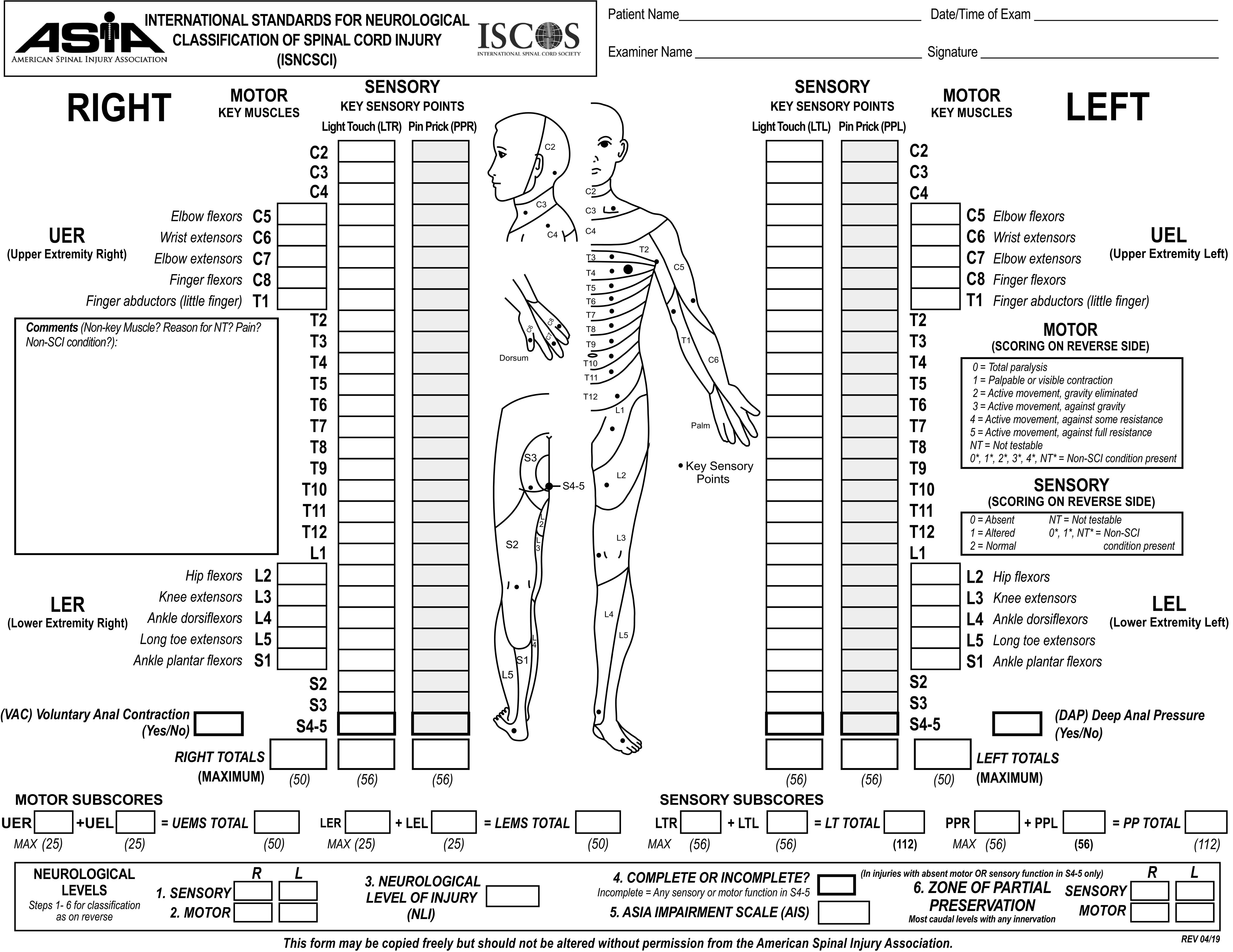Physical Address
304 North Cardinal St.
Dorchester Center, MA 02124
Acute spinal cord injury (SCI) is a devastating medical condition because of the impact of permanent disability produced by paraplegia or quadriplegia. Treatment of the initial injury and reintegration of the injured patient into society place a large burden on health-care systems and society as a whole. Furthermore, acute SCI is particularly taxing from an emotional standpoint, because the patient often remains fully aware of the disability and the health- care team recognizes that most injuries are permanent and refractory to medical treatment. For these reasons, efforts aimed at the preservation of spinal cord function are primarily focused on the prevention of injury. Once injury has occurred, treatment is largely supportive.
SCI can be classified according to etiology as ischemic, toxic, or mechanical. The underlying mechanisms of spinal cord injury can be further categorized into primary versus secondary mechanisms. Primary mechanisms of injury include immediate neuronal cell death from infarction, exposure to toxic substances, or direct mechanical forces (e.g., contusion, shear, laceration, distraction, or compression). Primary mechanisms of injury may also be a consequence of direct injury to blood vessels, glial cells, or the vertebral column necessary for spinal cord function. Secondary mechanisms of injury are more complex and are the consequence of biochemical, cellular, and pathophysiologic responses to the primary injury. Secondary mechanisms exacerbate the initial injury by way of inflammation, apoptosis, intracellular protein synthesis inhibition, glutaminergic dysfunction, electrolyte shifts, neurotransmitter derangements, vascular changes, edema, and loss of energy metabolism. Secondary mechanisms result in the eventual death (over the course of days to weeks) of an additional population of neuronal or glial cells that had initially survived the primary injury. Finally, spinal cord injuries can be further characterized as complete or incomplete based on the total absence or partial presence of neurologic function below the level of the injury.
Classifying spinal cord injuries according to underlying etiology and mechanism is important because it highlights potential targets for medical intervention. Ischemic injuries may be prevented, limited, or treated by strategies directed at improving spinal cord perfusion. The severity of mechanical injuries may be abated by surgical stabilization or decompression. Medical therapies aimed at limiting secondary mechanisms of injury, often referred to as neuroprotection strategies, can be instituted after the primary injury has occurred with the aim of preventing further cell death and functional disability. In theory, preserving even a small quantity of functioning neuronal structures can result in marked differences in rehabilitation potential. However, the available evidence supporting the effectiveness of neuroprotection strategies remains controversial.
The global incidence of traumatic SCI was approximately 23 cases per million persons (179,312 cases per year) in 2007. The reported incidence of traumatic SCI in the United States alone ranged from 25 to 59 cases per million persons (12,400 cases per year) in 2010. The average age at the time of injury is 37.1 years. The large majority of new traumatic SCI cases are a result of falls, motor vehicle accidents, and injury secondary to firearms. The rate of acute in-patient mortality after traumatic SCI was 7.5% between 2010 and 2012. Survival is predicted by the patient’s age, level of spinal cord injury, and severity or grade of cord syndrome. Compared with patients with T1–S5 spinal cord injuries, patients with C1–C4 injuries had a 3.27 times greater odds of first-year mortality, and patients with C5–C8 injuries had a 2.30 times greater odds of first-year mortality. The large majority of deaths occurring within the first year post-injury are the result of cardiovascular or respiratory complications. The cumulative expense of direct medical care over the lifetime of one SCI patient ranges from 500,000 to 2 million US dollars.
The primary injury in SCI accounts for the majority of subsequent neurologic dysfunction. However, the amount of dysfunction occurring from secondary injury may also be clinically significant, and the prevention of secondary injury may be critical for long-term outcome. The approach to the prevention of secondary injury after traumatic SCI includes stabilization of cardiovascular and pulmonary function, immobilization of the spine, determination of the level and extent of injury, initiation of pharmacologic neuroprotection strategies, and surgical stabilization of the spine.
The highest management priority in traumatic SCI is cardiopulmonary resuscitation and medical stabilization of the patient because the maintenance of adequate perfusion pressure and oxygen delivery to the injured spinal cord may be critical in preventing secondary ischemic injury. Management goals in the immediate post-injury period are to ensure an adequate airway, ventilation, oxygenation, and blood pressure without worsening the spinal cord injury. Supplemental oxygen should be administered and an airway established with the head and neck immobilized in a neutral position. The treatment of airway compromise in a patient with suspected traumatic SCI is challenging because it is difficult to prevent movement of the cervical spine during emergency maneuvers to establish a patent airway. All airway maneuvers cause some amount of cervical spine movement. However, the degrees of movement are often small and the contribution of these movements to secondary injury is not clearly established. In a patient with evidence of airway obstruction and hypoventilation, the jaw-thrust maneuver should be tried initially. This maneuver is performed by placing the palms of both hands on either side of the patient’s head to provide in-line stabilization of the neck and using the first two or three fingers of each hand to lift the mandible forward and outward, without extending the cervical spine. The jaw-thrust maneuver can be combined with the use of an oral or nasopharyngeal airway or used to facilitate mask ventilation ( Fig. 23.1 ).

If ventilation is inadequate, tracheal intubation should be performed with the two-person orotracheal or nasotracheal technique. The two-person technique requires one rescuer to provide manual in-line immobilization of the head and neck while the other rescuer performs tracheal intubation. Manual in-line immobilization is performed by cradling the occiput in the palms of the hands and gently applying forces that are equal and opposite to those being applied during laryngoscopy and tracheal intubation, with the goal of keeping the head and neck in a neutral position. It is important to avoid traction of the neck during manual in-line immobilization because it could cause distraction of the spine at the site of injury. If time permits and equipment is available, tracheal intubation can be performed using fiberoptic bronchoscopic techniques instead of direct laryngoscopy to decrease the risk of spinal movement. However, if the airway is not adequately topicalized during fiberoptic bronchoscopy, subsequent coughing may lead to increased motion of the spine. Moreover, visualization by fiberoptic bronchoscopy can be challenging in the presence of secretions, blood, or emesis. Ultimately, outcome data are lacking that demonstrate the advantage of any specific technique for tracheal intubation. If an airway cannot be established by oral or nasotracheal intubation, emergency cricothyroidotomy should be considered.
Blood pressure should be measured and treatment directed to maintain a mean arterial pressure (MAP) in the range of 85 to 90 mmHg during the first week after traumatic injury. Hypotension associated with traumatic SCI may be caused by hypovolemic or neurogenic shock with sympathetic denervation. The etiology of hypotension should be determined and treated with intravascular volume expansion, vasopressor therapy, or inotropic medications. Expert opinion, observational studies, and published clinical guidelines support the treatment of hypoxia and hypotension to lessen secondary ischemic injury and to improve outcomes after acute traumatic SCI.
After initial resuscitation of the patient with suspected acute traumatic SCI, the next priority is immobilization of the head, neck, and body until radiographic assessment for spinal fracture can be performed. Optimally, immobilization should be performed concurrently with resuscitation, but there may need to be a compromise if it interferes with efforts to reestablish cardiopulmonary function or treatment of other immediately life-threatening injuries. The entire spine, including the cervical spine, should be immobilized if the site of injury is not known. Clinical indications for immobilization of the spine include trauma from motor vehicle accidents, diving accidents, or acceleration–deceleration injuries that have a high risk of associated spinal cord injury. Indications for immobilization also include physical signs of tenderness along the posterior spine, decreased cervical range of motion, pain with motion, neurologic deficits, deformities, or decreased level of consciousness prohibiting neurologic examination.
The first step in immobilization is manual stabilization of the head without applying traction until the application of an appropriate-sized rigid or semi-rigid cervical collar. The patient can then be log-rolled with the spine in a neutral position onto a rigid spine board. The body is positioned on the board with the arms straightened with the palms against the body and the legs straightened with the ankles secured to each other with padding between them. Straps are applied to the lower extremities, the pelvis, and then the trunk, in that order, to secure the body snugly against the board. Tape is then applied across the forehead and the cervical collar to prevent head and neck movement. Wedges or a lightweight head block provide additional stability to prevent lateral movement of the head and neck. If there is obvious deformity of the spine, immobilization should be modified to maintain a neutral position of the deformity.
The objective of immobilization is to maintain the spine in a neutral position. Neutral position can be defined as the normal anatomic position of the head and torso when standing and looking straight ahead. Achieving a neutral cervical spine position in adults requires elevating the occiput approximately 2 cm above the spine board. The occipital elevation distance may need to be greater than 2 cm in patients with truncal obesity. In contrast, achieving a neutral cervical spine position in children on a spine board may require elevating the back and shoulders to accommodate a relatively larger head.
The proper radiographic evaluation of a patient with suspected SCI varies based on the availability of imaging modalities, level of consciousness, and the presence of systemic or neurologic deficit. The most conservative approach would be to require immobilization until radiologic evaluation of the patient is obtained. However, two sets of criteria have been developed to identify low-risk patients who do not require radiographic clearance. The National Emergency X-Radiography Utilization Study (NEXUS) identified five criteria that must be met in order to exclude patients from radiologic evaluation: lack of midline cervical tenderness, lack of neurologic deficits, normal consciousness, no intoxication, and lack of significant systemic injuries that affect the ability to examine the patient adequately ( Table 23.1 ). This decision tool demonstrated a 99.8% negative predictive value for cervical spine injury (99% sensitivity, 12.9% specificity). The Canadian C-Spine Rule for Radiography (CCSRR) after trauma examined only alert and medically stable patients. The decision to image the cervical spine was based on whether the patient had any high-risk factors (age greater than 65 years, paresthesia, mechanism of injury) or low-risk factors (simple rear-end motor vehicle collision, sitting position in emergency department, ambulatory at any time since injury, delayed onset of neck pain, or absence of midline cervical spine tenderness) for injury, followed by the ability to rotate the head actively 45 degrees to the right and to the left ( Fig. 23.2 ). This study demonstrated 100% sensitivity and 42.5% specificity for identifying clinically significant cervical spine injuries in 8924 patients. Patients with potential cervical spine injury who meet both the NEXUS and CCSRR criteria can have spinal precautions relaxed and their cervical spines cleared without radiologic evaluation.
Cervical-spine radiography is clinically indicated for patients with trauma unless all of the following criteria are met:
|

In patients with suspected cervical spinal injury based on NEXUS and CCSRR criteria, radiographic evaluation begins with a three-view cervical series (lateral, anteroposterior, and odontoid). When done with adequate technique, three-view cervical spine plain films have a sensitivity for detecting injury approaching 90%. A large percentage of cervical spine films are inadequate because of lack of visualization of the craniocervical and cervical-thoracic junction. The combination of cervical spine radiographs and supplemental computed tomography (CT) through the areas that are poorly visualized increases negative predictive values to 99% ( Fig. 23.3 ). Clearance in the awake and neurologically normal patient is then completed by moving the neck actively and evaluating for pain. In a patient who cannot be evaluated clinically but is at high risk of a cervical fracture, the three-view cervical series, supplemented by high resolution CT imaging, reduces the risk of missing a fracture to less than 1%. In patients who have normal plain films and cervical CT imaging, but who are suspected of having spinal cord injury (e.g., presence of neurologic deficits or cervical pain), magnetic resonance imaging (MRI) should be considered for clearance. The benefit of MRI in the evaluation of traumatic SCI is not well defined, but it may help to identify occult ligamentous injury, disc herniation, or epidural hematoma.

Guidelines for performing a detailed neurologic assessment for spinal cord injury have been developed by the American Spinal Injury Association (ASIA). Testing for sensation is performed in response to pinprick and light touch over each of the 28 dermatomes (C2 to S4–5) on both the right and left sides of the body. Sensation to light touch and pin prick is scored as 2 (normal), 1 (altered), or 0 (absent), compared with sensation on the patient’s cheek as the normal frame of reference. The sensory level is defined by the most caudal dermatome with normal sensation. Motor function is examined by testing key muscle functions corresponding to 10 paired myotomes (C5–T1 and L2–S1). Strength is rated on a six-point scale ranging from 0 to 5, with 0 indicating total paralysis and 5 indicating full strength against resistance. The motor level is defined by the lowest key muscle function with a grade of at least 3 (anti-gravity function). This standardized neurologic examination and the ASIA scale has been shown to correlate with clinical outcomes and therefore can be used to stratify patients according to the severity of neurologic injury ( Fig. 23.4 ). Deep anal pressure awareness (innervated by the somatosensory components of the pudendal nerve from S4–5) is evaluated by applying gentle pressure to the anorectal wall. The external anal sphincter (innervated by the somatic motor components of the pudendal nerve from S2–4) is evaluated by the absence or presence of reproducible voluntary contractions around the examiner's finger.

Pharmacologic therapies for the treatment of acute SCI have shown little benefit. The corticosteroid methylprednisolone has been the most extensively studied pharmacologic agent for SCI. Its mechanism of action is thought to involve reduction of cord edema, support of energy metabolism, anti-inflammatory properties, membrane stabilization, antioxidant effects, and free-radical scavenging. There is controversial class I clinical evidence to support its use in SCI. This controversy has arisen over several large clinical trials. The first National Acute Spinal Cord Injury Studies (NASCIS) trial in 1984 randomized 330 patients to either high or low dose methylprednisolone every 6 hours for 10 days. There was no placebo arm in NASCIS I. The trial demonstrated a statistically significant increase in wound infections, but no difference in motor or sensory clinical outcomes between the two treatment groups.
The landmark NASCIS II study in 1990 was a double-blind, controlled, multicenter trial in which 487 patients were randomized into one of three treatment arms: (1) methylprednisolone 30 mg/kg bolus followed by 5.4 mg/kg/h for 23 hours; (2) naloxone 5.4 mg/kg bolus followed by 0.5 mg/kg/h for 23 hours; or (3) placebo. The NASCIS II trial showed no difference in clinical outcomes at 1 year, although a secondary analysis demonstrated that patients given methylprednisolone within 8 hours of injury had a statistically significant improvement in their motor scores compared with study patients who received methylprednisolone after 8 hours.
The NASCIS III trial in 1997 was a multicenter study in which patients who presented within 8 hours of acute traumatic SCI received a bolus dose of methylprednisolone (30 mg/kg) and were then randomized into one of three treatment arms: (1) methylprednisolone 5.4 mg/kg/h for 24 hours; (2) methylprednisolone 5.4 mg/kg/h for 48 hours; or (3) tirilazad mesylate (an inhibitor of lipid peroxidation) 2.5 mg/kg every 6 hours for 48 hours. The trial showed no significant improvement in any of the primary outcome measures at 1 year. However, secondary analysis demonstrated that in patients who started treatment more than 3 hours after injury, 48 hours of methylprednisolone was associated with an improvement in motor function at both 6 weeks and 6 months compared with 24 hours of methylprednisolone treatment.
Methylprednisolone was associated with a higher complication rate in all the NASCIS trials, although mortality was similar in all treatment groups. Complications included wound infection, pneumonia, and sepsis. Even though the NASCIS trials were well-designed, randomized controlled trials, the validity of the data showing benefit has been called into question. Primary analyses in all three trials failed to show significant improvement with methylprednisolone therapy in acute SCI. Improved outcomes were only seen in secondary (and possibly post hoc) analyses. Some experts argue that such findings, while interesting, are not sufficient to support a standard of care in the treatment of patients with acute SCI. The Consortium for Spinal Cord Medicine concluded that because of insufficient evidence of clinical benefit, the routine use of methylprednisolone in acute SCI is not recommended. If it is used in this context, methylprednisolone should not be started more than 8 hours after injury. Methylprednisolone is contraindicated in patients with acute SCI and concurrent traumatic brain injury (TBI) because corticosteroid therapy has been shown to be associated with increased mortality in patients with moderate to severe TBI.
Other pharmaceuticals studied in randomized clinical trials for SCI (e.g. GM-1 ganglioside, tirilazad mesylate, naloxone) have not shown any benefit. Emerging treatments for acute SCI include therapeutic hypothermia, transplantation of progenitor or stem cells into the injured spinal cord, neuroprotective agents (e.g., riluzole, minocycline, basic fibroblast growth factor), and neuroregenerative agents (e.g., Cethrin, anti-Nogo).
Surgery for patients who have suffered traumatic SCI can be considered for stabilization of an unstable spine, to reduce a deformity, or to decompress neural tissues. Surgical stabilization of unstable spine lesions may prevent primary neurologic injury. Incomplete injuries or progressive neurologic injuries are more likely to benefit from decompressive surgery for lesions impinging on the spinal cord. Surgery to relieve a complete neurologic injury is not indicated because primary cell death has already occurred and reversal of this deficit will not occur. Most unstable injuries require anterior and posterior fixation, although some cervical injuries require anterior discectomy and fusion or posterior fixation alone. The treatment of vertebral fractures is controversial and may benefit from conservative treatment with an orthosis. Although they do not result in an unstable spine, vertebral burst fractures may require surgery because the lesion may result in collapse of the vertebral body with time, causing the loss of anterior height or kyphosis. There are no definitive guidelines regarding the timing (early versus late) of decompressive surgery. The available evidence supports early surgery in patients with cervical spine injuries. However, evidence regarding patients with injury at other spinal cord levels is limited.
Become a Clinical Tree membership for Full access and enjoy Unlimited articles
If you are a member. Log in here